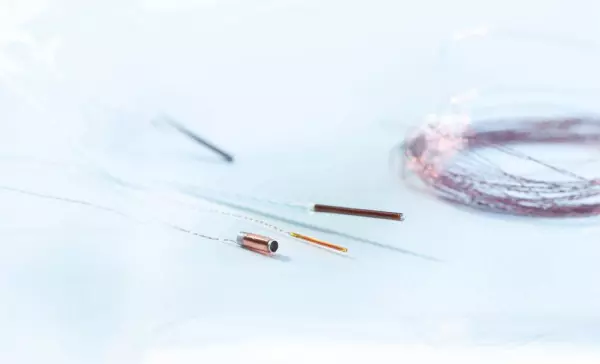
Designed for use with the Aurora® EM Tracking System, these sensors provide real-time tip tracki...
Portal and digital medical technology fair of the largest MedTech cluster in Germany
 Medical technology sensors, sensor technology for medical devices, sensor technology for medical products, sensor technology for medical systems, sensor technology for medical technology systems, sensors for electrical medical devices, sensors for medical devices, sensors for medical products, sensors for medical systems, sensors for medical technology systems
Medical technology sensors, sensor technology for medical devices, sensor technology for medical products, sensor technology for medical systems, sensor technology for medical technology systems, sensors for electrical medical devices, sensors for medical devices, sensors for medical products, sensors for medical systems, sensors for medical technology systems Sensors are devices that detect changes in their environment. When a physical phenomenon occurs, a sensor will respond by generating a voltage or digital signal that can be read by a human. For example, a microphone can detect the presence of sound and convert it into an electrical signal. These signals can be transmitted, recorded, and amplified to determine whether the object is safe or not. Some sensors even detect metal, which is used by security personnel to identify potential threats.
Biosensors can be daily wearable devices or systems that are used on an occasional basis. They can provide data that can improve patient care and support compliance, rather than simply recording data. New advances in silicon technology and manufacturing processes are opening new possibilities for the use of sensors in healthcare. Additive printing manufacturing processes enable the incorporation of sensors directly onto biocompatible materials, which greatly simplifies the manufacturing process. This process is a step toward a broader application of sensors in health care.
Medical sensors are increasingly becoming an integral part of medical equipment. These devices need to be safe and accurate to prevent complications. Among other things, sensors can measure temperature, airflow, carbon dioxide, and gas pressure. Others can detect a product's expiration date. In addition, sensors can detect the contents of a liquid, which is especially important in the case of medications. When selecting a sensor for a medical device, it is important to consider the overall performance of the system. Other key performance parameters include power requirements, digital vs. analog front-end, water resistance, and sensitivity.
Medical equipment has several different applications. For example, a blood dialysis machine at home must detect waste products in the fluid. For these applications, optical devices are an excellent choice. They are small, low-power, and can withstand a range of environments. Their portability is another benefit of optical sensors. In all cases, they reduce the risk of infection. These medical devices are a great way to improve health care. However, there are many other uses for sensors.
The use of sensors in healthcare applications is rapidly increasing. In the last decade, sensor technology has helped to develop the capabilities of medical equipment. They can detect a variety of different factors and produce a digital signal. The most common examples of these devices are ventilators and blood glucose monitors. These technologies are now widely used and are transforming the healthcare industry. They are increasingly vital to the advancement of connected health devices. There are many ways to use sensors and improve their performance.
Today, sensors are used in everything from transportation to medical treatment. They have a wide range of applications and are used worldwide. Their use is improving transportation, healthcare, nanotechnology, and mobile devices. They can even help with artificial intelligence and virtual reality. These are just a few examples of the many ways in which sensors are used in our lives. If you're in the industry, consider adding these devices to your equipment. They will enhance your business.
Become a digital exhibitor yourself in the online portal of the largest and best-known MedTech cluster region in Germany and inform the world of medical technology about your products and services as well as about news, events and career opportunities.
With an attractive online profile, we will help you to present yourself professionally on our portal as well as on Google and on social media.